Arthritis is not a specific disease, but a group of disorders affecting the joints, and it is characterized by inflammation, swelling, stiffness, and decreased mobility. These arthritis symptoms come and go, but will progress and worsen with time. Arthritis is more common among seniors and is the leading cause of disability in the geriatric population. Although it does not have a cure, some home remedies can help relieve the symptoms. Keep reading to learn more about arthritis, types, causes, symptoms, and possible treatment.
What is Arthritis?
Arthritis is caused by wear and tear of joint cartilage, and infection in one or more joints. Arthritis symptoms manifest differently based on the cause and type.
Types of Arthritis
Arthritis is a group of disorders but the most common include osteoarthritis, rheumatoid, psoriatic, gout, and septic.
Osteoarthritis
Osteoarthritis is caused by worn-out joint cartilage. Osteoarthritis mostly damages the hands, knees, hips, and spine, and the symptoms include stiffness, pain, tenderness, loss of flexibility, bone spurs, and granting joint sensation.
Factors like sex, obesity, bone deformities, occupation, age, and genetics can increase the risk of osteoarthritis.
Rheumatoid arthritis
Rheumatoid arthritis, an autoimmune disorder develops when your immune system attacks your bone tissues and joint lining. RA is symmetrical and affects both sides of the body simultaneously meaning, if your right hand is affected, chances are the left hand will be affected too.
Unlike osteoarthritis, RA can affect other body parts including eyes, lungs, skin, heart, kidney, and bone marrow. RA inflammation is chronic, and the symptoms come and go, and they include swollen, stiff, warm and tender joints, fatigue, fever, and weight loss.
Family history, sex (mostly occurs in women), smoking, obesity, and environment can increase the risk of RA.
Psoriatic
Psoriatic arthritis affects people with psoriasis (a skin condition that causes red patches with silvery scales). PA is an autoimmune disorder that develops when your immune system attacks healthy tissues and cells.
Progression of PA differs from individual to individual, but it causes foot pain, lower back pain, and swollen fingers. There is no cure for P.A, however you can manage the symptoms with several home remedies.
Gout
Gouty arthritis is an inflammatory disorder that develops in people with gout (high levels of uric acid in the blood).
Gout symptoms usually occur at night, and they include intense joint pain, inflammation, redness, limited range of motion and lingering discomfort.
Diet, obesity, medication, family history, age, and surgery can increase levels of uric acid in the body.
Septic arthritis
Septic arthritis is an infection caused by bacteria, mostly Staphylococcus aureus, virus or fungus. The infection-- skin or UTI can travel through the bloodstream and cause inflammation of the joints. Septic arthritis affects infants and adults and occurs in the knees, hips, and shoulders.
Arthritis Causes
Arthritis affects various body joints and is caused by joint inflammation, damage, wear and tear of the joint cartilage. The disorder is characterized by swollen, stiff, redness, tenderness, and joint pain.
Risk Factors Associated with Arthritis
There a variety of factors like obesity, infection, joint injuries, smoking, age, gender, genetics, and family history can increase the likelihood of developing arthritis.
Arthritis Symptoms
Arthritic symptoms develop differently based on the cause, and the part of the body affected. They include:
- Swollen, tender, stiff, and red joints
- Fatigue
- Weight loss
- Tingling sensation and discomfort under the big toe
- Bone spurs
- Loss of flexibility
Complications of Arthritis
Sometimes arthritis can also affect your body organs and cause health complications. These complications can either be mild or severe based on your form of treatment.
Carpal Tunnel Syndrome
Carpal Tunnel Syndrome regularly affects people with RA. It is a syndrome that occurs when your hand's median nerve gets squeezed and swells, causing numbness, pain, tingling in the arm, and weakness of the hand.
Carpal Tunnel Syndrome is progressive, but early diagnosis can delay the symptoms. In the early stages, the symptoms can be relieved by wearing Carpal Tunnel Syndrome gloves and avoiding certain activities. But, as the symptoms progress, you may require surgery to prevent permanent damage of the carpal tunnel.
Some factors like genetics, repetitive hand use, wrist position, and certain health condition like diabetes can increase the risk of Carpal Tunnel Syndrome.
Joint Damage (Osteoporosis)
Osteoporosis causes abnormal porous bones and decreases bone density. It is a common joint disease, but the symptoms include bone fractures, height discrepancies, back pain, a stooped stature, and tooth loss if osteoporosis has affected the jaw bone.
Widespread Inflammation
Rheumatoid arthritis causes inflammation in other parts of the body including the lungs, heart, eyes (Sjogren’s syndrome), and can lead to narrowing of blood vessels walls. Luckily, with proper treatment, this inflammation can be prevented.
Cardiovascular Diseases
Inflammation caused by arthritis can affect blood vessels and trigger cytokines (a protein that regulates immunity and can trigger further inflammation). Inflammation also changes the shape of blood vessels and increases the risk of plaque rapture which in turn trigger a heart attack.
Sleep Disruption
Patients with RA can develop fibromyalgia (widespread body inflammation) which causes insomnia. Additionally, using corticosteroids can interfere with your sleep cycle.
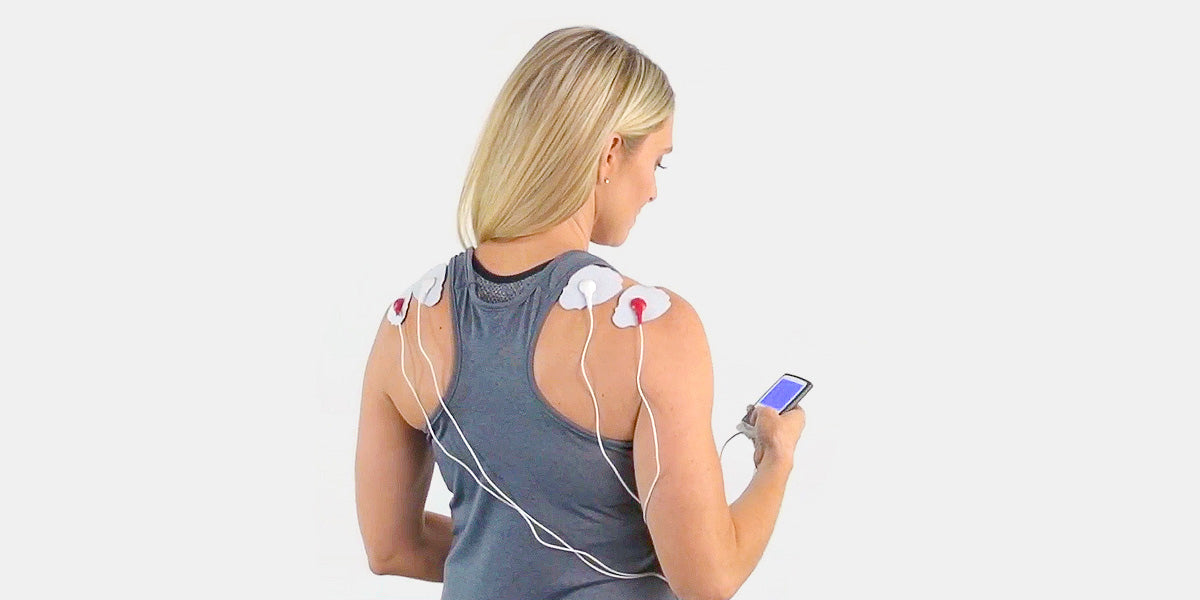 Try a TENS unit for fast and effective pain management. ( See Product)
Try a TENS unit for fast and effective pain management. ( See Product)
Using a TENS Unit can relieve fibromyalgia symptoms. Furthermore, you will need to adjust your bedtime habits, exercise regularly, and eat an anti-inflammatory diet to improve your sleep.
Depression
Depression and RA usually occur simultaneously, but despite it being a common condition among people with arthritis, it is rarely screened or treated.
RA treatment is not effective in addressing depression. So you will need a combination of remedies including yoga, exercises, and stress management techniques.
Progression of Arthritis
Both osteoarthritis and Rheumatoid arthritis deteriorate cand worsen with time. OA and RA symptoms progress in different stages, and each stage requires a different form of treatment.
Osteoarthritis
Osteoarthritis develops in four stage, with stage one being the early symptoms to stage four, which is severe osteoarthritis.
Stage One
At this stage, you will have a minor bone spur growth (develops where joints meet). There are no significant symptoms, but your doctor may recommend bone supplements like chondroitin and glucosamine. Exercise can also relieve early arthritic symptoms.
Stage Two
This is the mild stage of Osteoarthritis where the bone spur increases in size, but your cartilage will be healthy. Your synovial fluid will also be present at normal levels.
You will however, start to experience symptoms like joint stiffness and tenderness. Treatment will include low-impact aerobic exercise, strength-training, diet, weight loss and a knee brace to stabilize the joints. Your doctor can also prescribe NSAIDs for pain relief.
Stage Three
Stage three is classified as moderate OA, where the cartilage starts to narrow. You will begin to experience joint pain while walking, bending, and running.
Besides the treatments mentioned above, you may get cortisone injections.
Stage Four
Stage four is classified as severe osteoarthritis, where the knee pain and discomfort will reach their peak. Additionally, the joint cartilage will be worn off, the space between the bone dramatically reduced, and the synovial fluid will also decrease, increasing bone friction.
Bone realignment or total knee replacement surgeries are usually done at this stage to replace the worn out bone.
Rheumatoid
Rheumatoid Arthritis develops differently in every person. The symptoms will depend on how advanced the RA is, the age when you were diagnosed, and the activeness of the condition.
Stage One
In this stage, your joint lining will be inflamed, and synovial will swell, but your bones won’t be damaged yet. The symptoms will include swelling, joint pain, and stiffness.
Stage Two
It is moderate RA where the inflammation will begin to affect the cartilage. You will begin to experience loss of mobility and decreased motion.
Stage Three
It is the severe stage of RA, and the inflammation will completely damage the cartilage and the surrounding bone. The potential symptoms include swelling, decreased muscle strength and mobility. You may also start to develop physical deformities.
Stage Four
It is the end stage of rheumatoid arthritis inflammation, but the damage will progress. The joint may stop functioning, and there will be severe swelling, stiffness, and pain.
Joint replacement can be done in this stage to replace the worn out joint.
How to Manage Arthritis
With the correct treatment, you can slow down the progression of arthritis or trigger arthritic remission (where the symptoms disappear). Arthritis treatment focuses on relieving the symptoms and improving joint function. Find some of the most effective and popular treatments below.
Medications
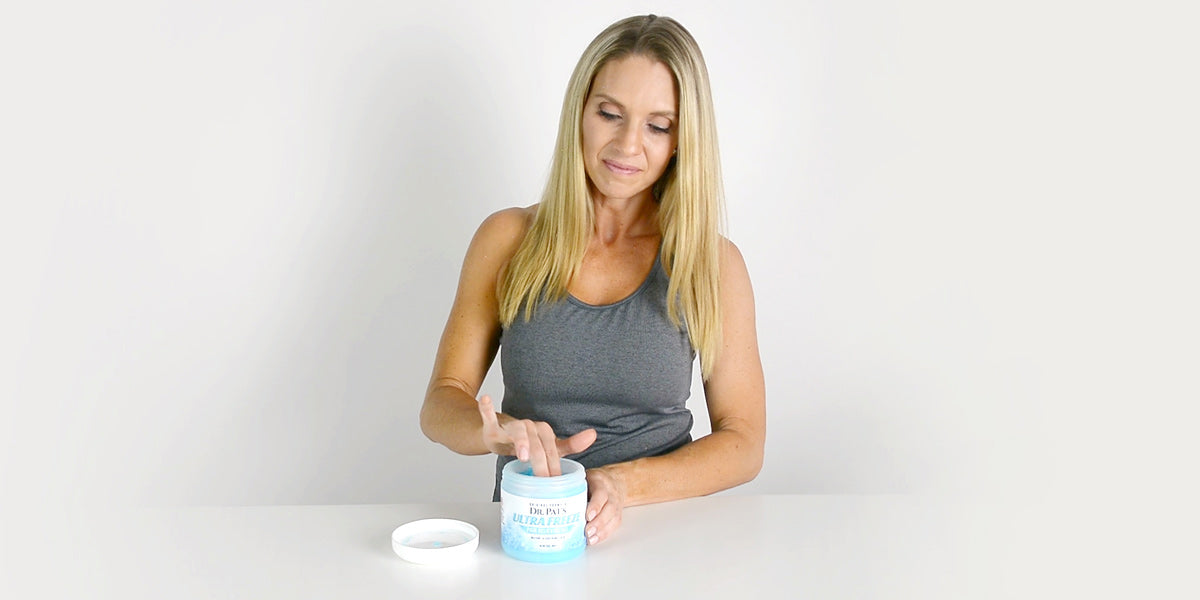 Topical arthritis creams can be rubbed directly into the skin for instant cooling relief. ( See Product )
Topical arthritis creams can be rubbed directly into the skin for instant cooling relief. ( See Product )
Arthritis medications vary depending on the type of arthritis, and the include NSAIDs, Angelics that reduce pain, Counterirritants like arthritis creams, corticosteroids, and Disease-modifying antirheumatic drugs.
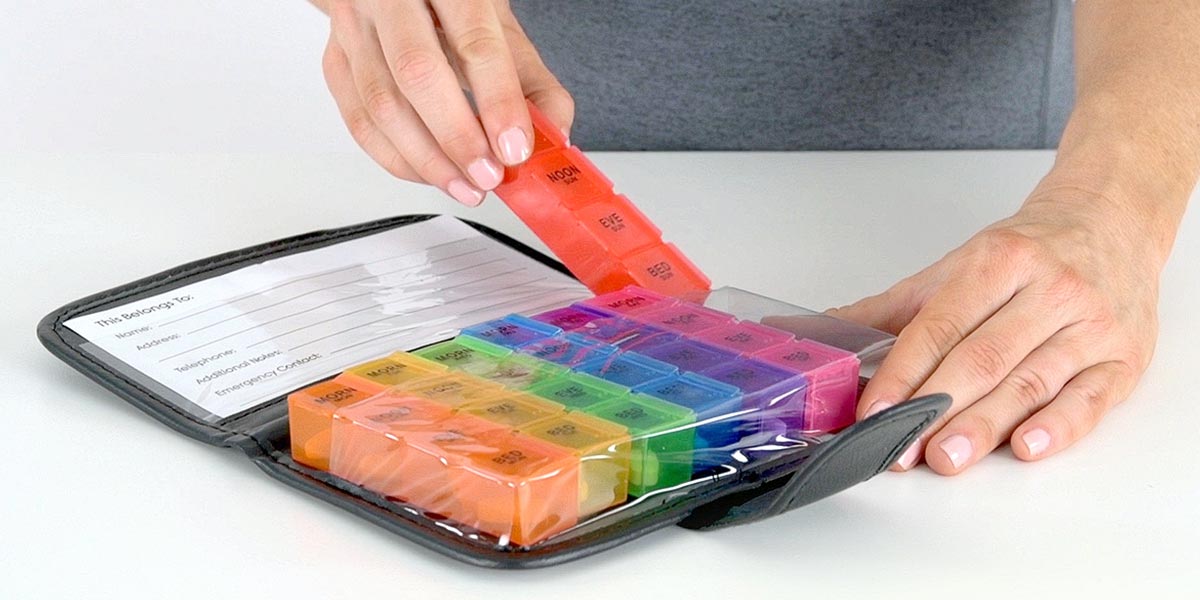 Keep all of your most important medications organized and accounted for with a handy pill organizer. ( See Product )
Keep all of your most important medications organized and accounted for with a handy pill organizer. ( See Product )
Remember to get pill organizers to keep these medications in order and easily accessible. This makes them an excellent addition to any first aid kit.
Diet
An arthritic diet lowers not only inflammation but also blood pressure, protects against chronic conditions, promotes heart health, and aids in weight loss. An anti-inflammatory diet includes fish, vegetables, fruits, nuts, beans like red or black kidney beans, olive oil, and whole grains.
Exercise
As you consider starting an arthritis workout understand what your body can handle and the type of exercise you need.
Exercise can help relieve arthritis stiffness and pain, strengthen your muscles, maintain bone strength, and aid in weight loss. Some of the workouts you can try to include are aerobics like walking, cycling, dancing, and strength training exercises.
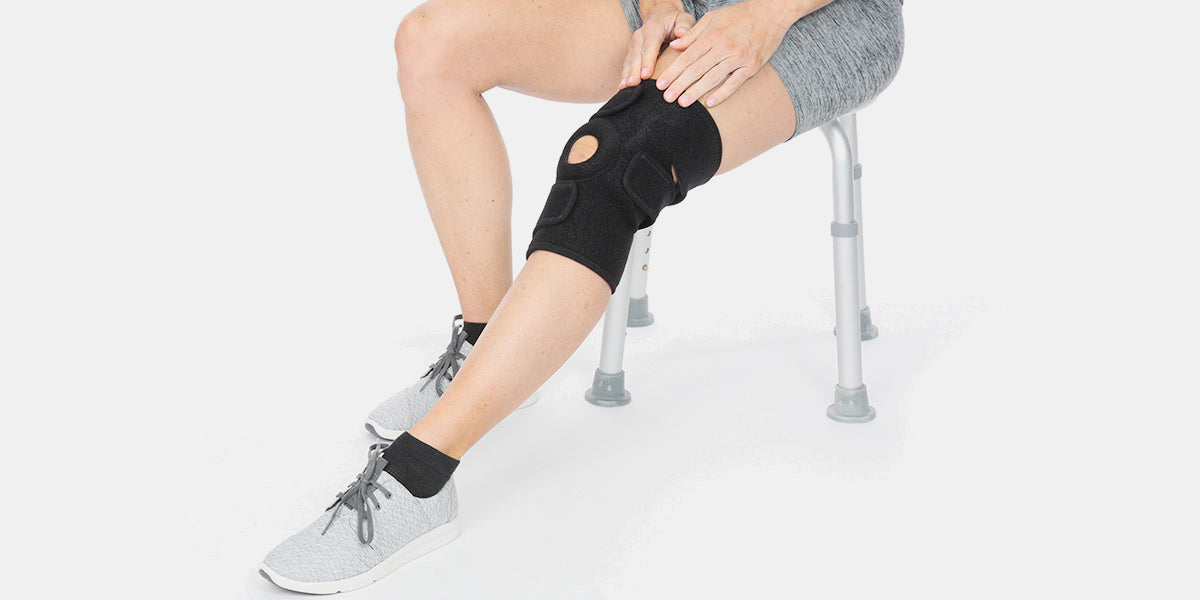 Knee braces can slip on and off easily for instant joint support and compression. ( See Product )
Knee braces can slip on and off easily for instant joint support and compression. ( See Product )
Also, try to protect your joints using the knee braces. These support devices are perfect for those suffering from arthritis, as they offer the support and compression needed to overcome pain.
Heat Therapy
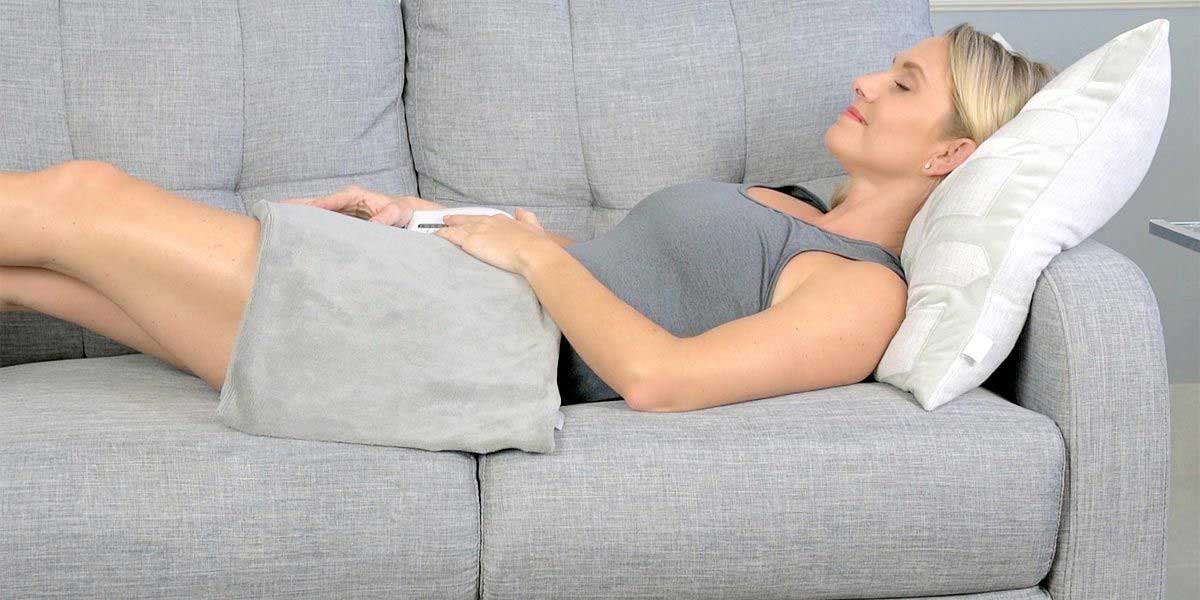 ( See Product )
( See Product )
Heat therapy works excellent for RA as it helps to relax the muscles and improve pain tolerance. Heat is part of arthritis treatment, but fortunately, you don’t need to visit the therapist every time you experience symptoms. There are some home techniques to use like using an electric heating pad, a warm bath or shower, that are just as effective.
Assistive Devices
Several self-help arthritis devices can make it easy to accomplish a range of everyday activities. Check out some of our favorite assistive devices below.
Jar Openers
A simple task like opening a jar can be daunting for seniors with arthritis. Luckily, with the jar openers, you can easily grip a jar or bottle. When buying a jar opener, consider the size, material used, durability, and portability.
Walking Aids
 Folding walkers are ideal for travel as they allow you to fit them in a car trunk or suitcase for on-the-go support. ( See Product )
Folding walkers are ideal for travel as they allow you to fit them in a car trunk or suitcase for on-the-go support. ( See Product )
Canes, crutches, walkers, or scooters can make walking more comfortable. They also enhance stability, balance, and increase movement. Also, consider getting orthotics which help to ease painful feet.
Dressing Aids
Tools like dressing sticks, reachers, shoe horns, and sock aids can make dressing easier and effortless.
Check out these dressing devices.
Massage Therapy
Regular massage can significantly reduce pain and promote the production of cortisol and serotonin, which help to improve your mood.
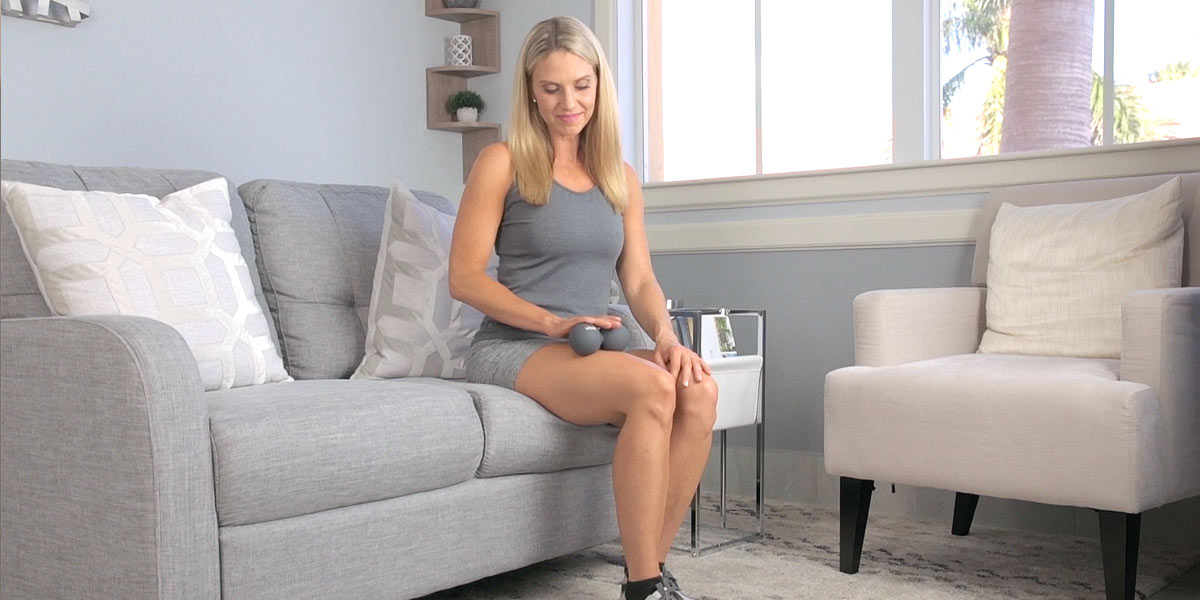 Take your self-massage to the next better with these roller balls. ( See Product )
Take your self-massage to the next better with these roller balls. ( See Product )
Several massage techniques can be used, including deep tissue massage, Swedish, Ayurvedic, hot stone, and Thai massage. You can try to self-massage with the Vive massage balls to relieve sore muscles and pain.
Alternative Medications
In the early stages of arthritis, you can use several home remedies for arthritis to relieve the symptoms and pain. Some of the therapies you can try include:
Supplements
Supplements like Chondroitin and Glucosamine sulfate have been used to rebuild bone cartilage and promote bone strength.
TENS Units
Transcutaneous Electrical Nerve Stimulation can work great for Osteoarthritis. TENS uses low voltage electrical current to stimulate muscle and relieve pain.
TENS devices are, however, not recommended for people using a pacemaker or those with open wounds.
Check out these TENS Units.
Acupuncture
Acupuncture uses fine needles on specific areas to reduce pain, and it is a treatment that can boost the production of endorphins and works great for fibromyalgia associated with RA.
Protect Your Joint
Joint pain and stiffness is a major issue, and the pain gets worse when performing daily chores. So, it is essential to protect your joints using braces and sleeves. On a day to day basis you may need a Vive arthritis gloves that provide compression and relieves inflammation. The gloves are also textured and offer a secure grip.
 Arthritis cloves supply your finger and wrist joints with warming compression to alleviate chronic aches and pains. ( See Product )
Arthritis cloves supply your finger and wrist joints with warming compression to alleviate chronic aches and pains. ( See Product )
Additionally, you can use knee sleeves to reduce pain, inflammation, prevent knee damage, and encourage movement.
Check out these knee sleeves.
Surgery
In the late stages of arthritis, surgery will be done to repair or replace worn-out joints. Some of the surgeries include: joint repair that realigns and smoothens joint surfaces, a joint replacement that replaces a joint with an artificial one, and joint fusion that is done on smaller joints like wrists, ankles, and fingers.
Living with Arthritis
Arthritis is degenerative, but you can learn how to manage the symptoms and live a productive life despite the constant flare-ups. A change in your diet and workout routine can go a long way in eliminating some of the symptoms. Additionally, avoid stress and always protect your joints when enjoying any activity.
Sources:
https://www.arthritis.org/about-arthritis/understanding-arthritis/what-is-arthritis.php










Leave a comment